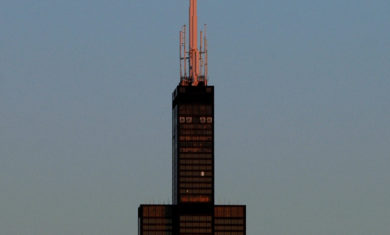Adler Skywatch: August 2023
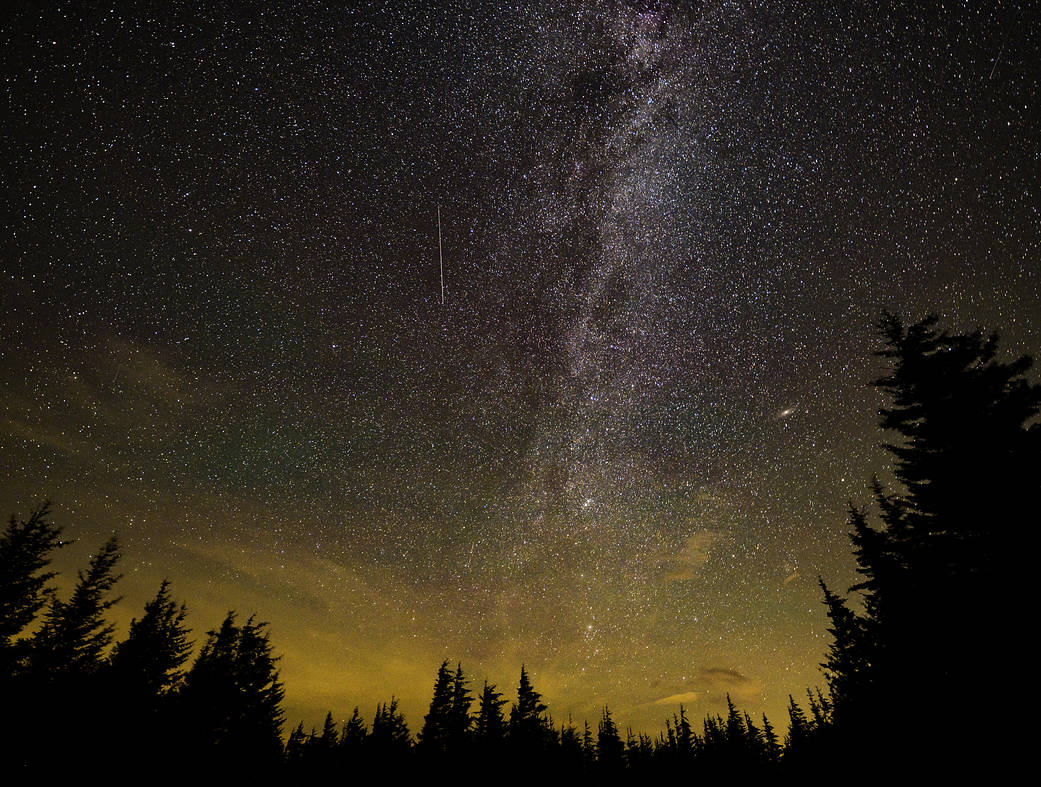
Header image: In this 30 second exposure, a meteor streaks across the sky during the annual Perseid meteor shower Friday, Aug. 12, 2016 in Spruce Knob, West Virginia. Image credit: NASA/ Bill Ingalls
One of the biggest meteor showers of the year, a star that vanishes into the dark, and a super blue Moon are some of the anticipated night-sky sights this month, August 2023.
Perseids Are Popping!
The Perseids meteor shower occurs in mid-August, with the rate of Perseid meteors expected to peak during the evening of August 12 and morning of August 13. This year, the peak occurs during a very slim, waning crescent Moon, when it is only about 10% lit. This makes for a darker sky and better chances to see meteors!
In the Chicago area, the Perseids’ radiant point is circumpolar—meaning it doesn’t rise or set—improving viewing chances. Regardless, it is more likely to see meteors when the radiant point is higher in the sky. A number of forecasts are predicting a maximum of over 100 Perseids per hour this year! To see this high of a rate, you must be under the darkest skies—unfortunately, viewers in light-polluted areas will see far fewer.
Go outside after midnight the morning of August 13, settle in and let your eyes adjust to the dark for at least 20 minutes. Face northeast, and look up. If you see sporadic, quick streaks of light—those are the meteors! To have a better chance of seeing more meteors, find a viewing spot where you can face away from artificial lighting.
A Vanishing Star
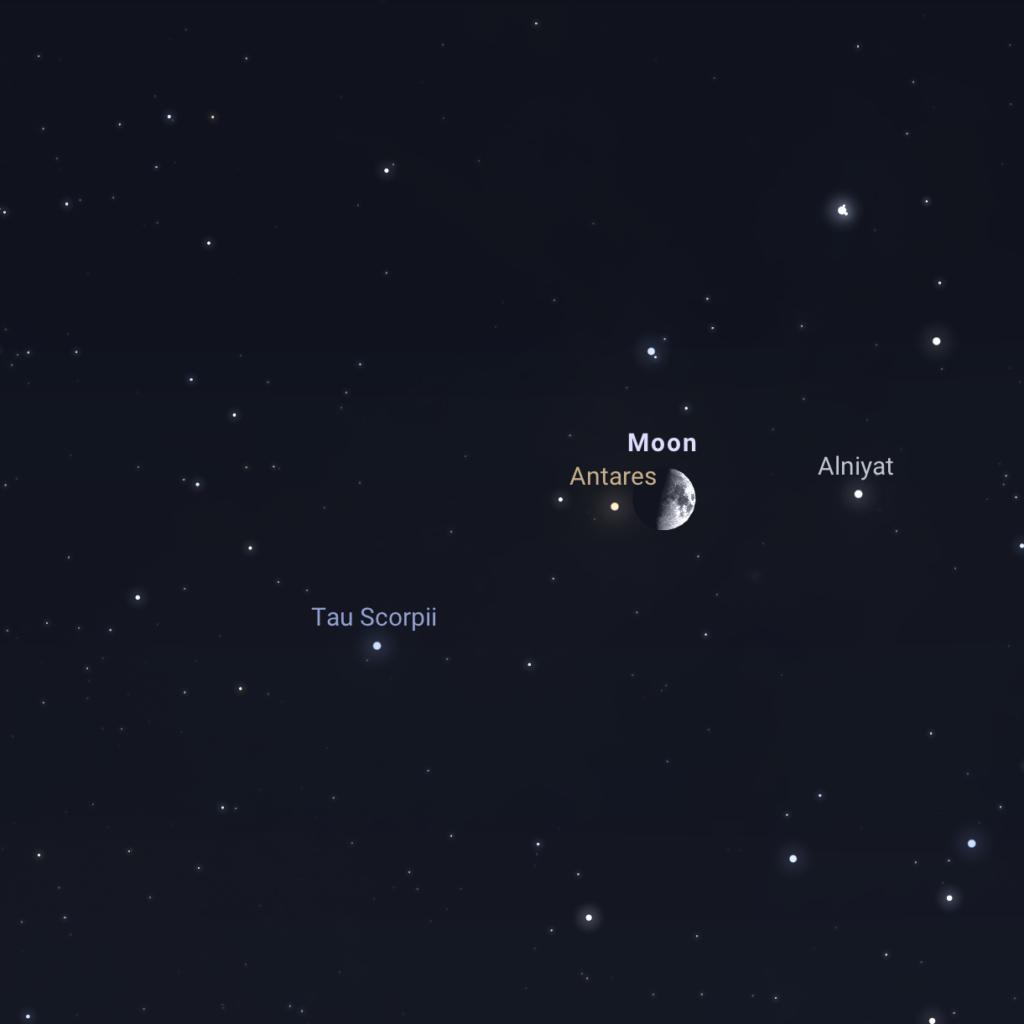
The evening of August 24, a large swath of the U.S. gets to experience a lunar occultation, when the Moon passes in front of a star or planet. In the Chicago area, this event takes place in the evening of August 24, when the first-quarter Moon passes in front of the first-magnitude star Antares, in the zodiac constellation Scorpius.
The star is expected to disappear behind the dark edge of the Moon just before 9:30 pm. Both the Moon and Antares are only about 15 degrees above the south-southwest horizon at the start of the occultation. You’ll need to look even closer to the horizon to see Antares re-emerge from the bright side of the Moon shortly after 10:30 pm, since the two will be barely seven degrees above the southwest horizon. As a result, Antares’ reappearance may not be easily visible in the Chicago area due to the general brightness of the local night sky and because nearby trees and buildings might obscure your view.
Month of Supermoons

Last month’s full Moon was considered a supermoon—a full Moon or new Moon at its closest point to Earth in its orbit. If you missed it due to fireworks or wildfire smoke, don’t worry! The next three full Moons are also supermoons and two of them rise this month, on August 1 and August 30.
The full Moon on August 30 is also considered a blue Moon—a term that has nothing to do with the actual color of the Moon. Rather, a blue Moon is the second full Moon in a given calendar month. You may see this one called the Full Super Blue Moon, or even the Full Sturgeon Super Blue Moon!
Want to learn more about blue Moons? Check out our handy dandy guide to blue Moons here!
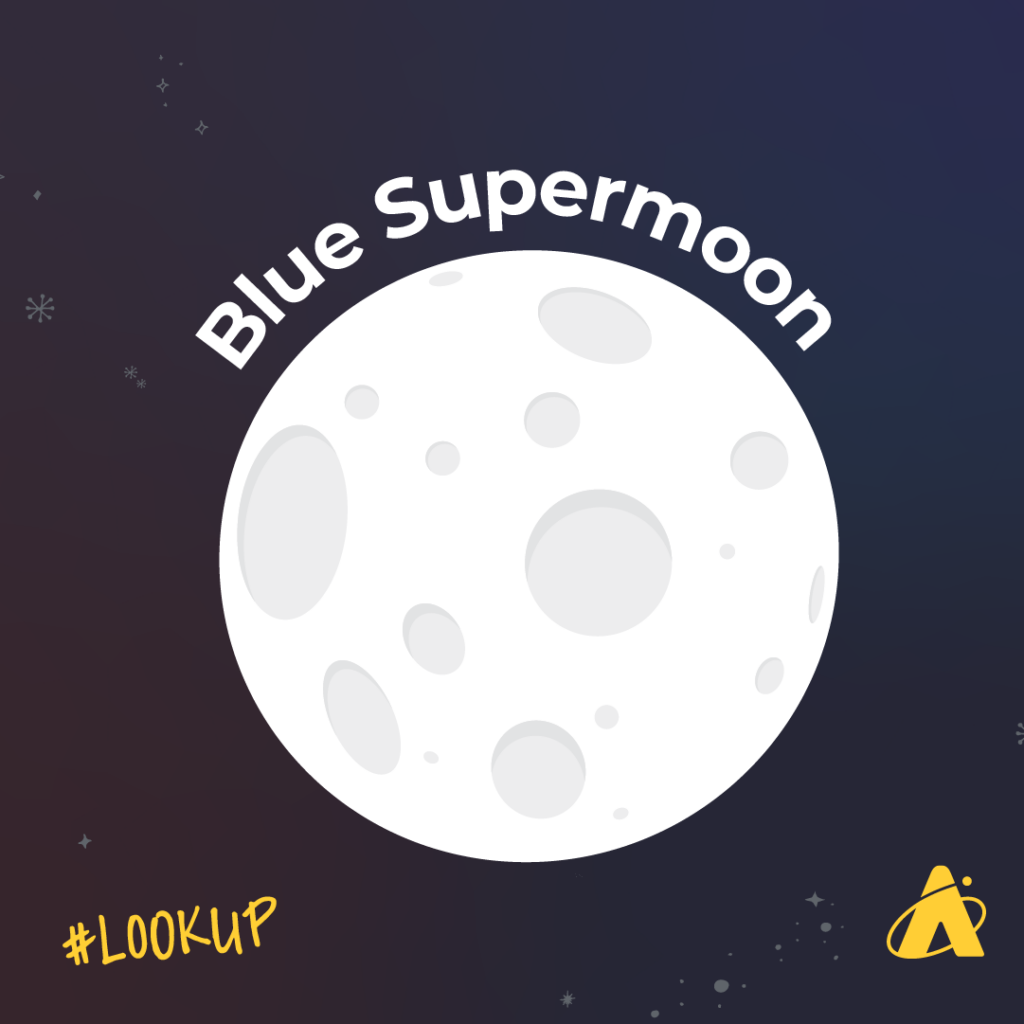
Planet Procession
This month, look low in the east-southeast shortly after sunset to spot the planet Saturn, glowing slightly brighter than a first-magnitude star. It rises around 9:30 pm at the start of the month, and around 7:30 pm by month’s end. It gets only about 35 degrees high in the south at its highest and it disappears in morning twilight low in the west-southwest sky. Additionally, Saturn reaches opposition on August 27, meaning it will be at its brightest for 2023.
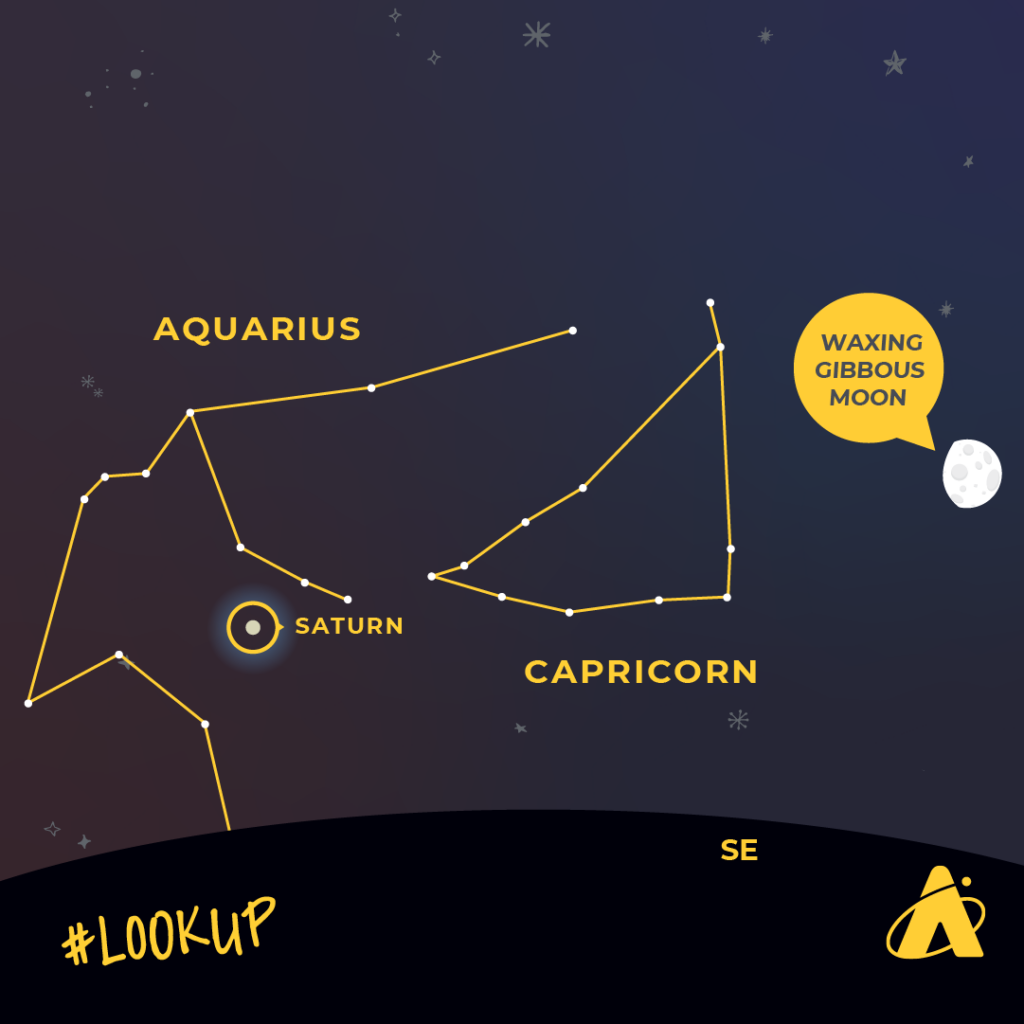
The bright planet Jupiter rises in the east-southeast shortly after midnight at the start of the month, and around 10:30 pm by month’s end. At brighter than minus-two magnitude, it’s easy to spot. It gets about 60 degrees above the southern horizon before morning twilight blots it out.
The last seven days of the month, try spotting the brilliant planet Venus. It will be low in the east about an hour before sunrise, when it is affectionately known as the Morning Star. It doesn’t get very high in the east before it fades in the glare of dawn.
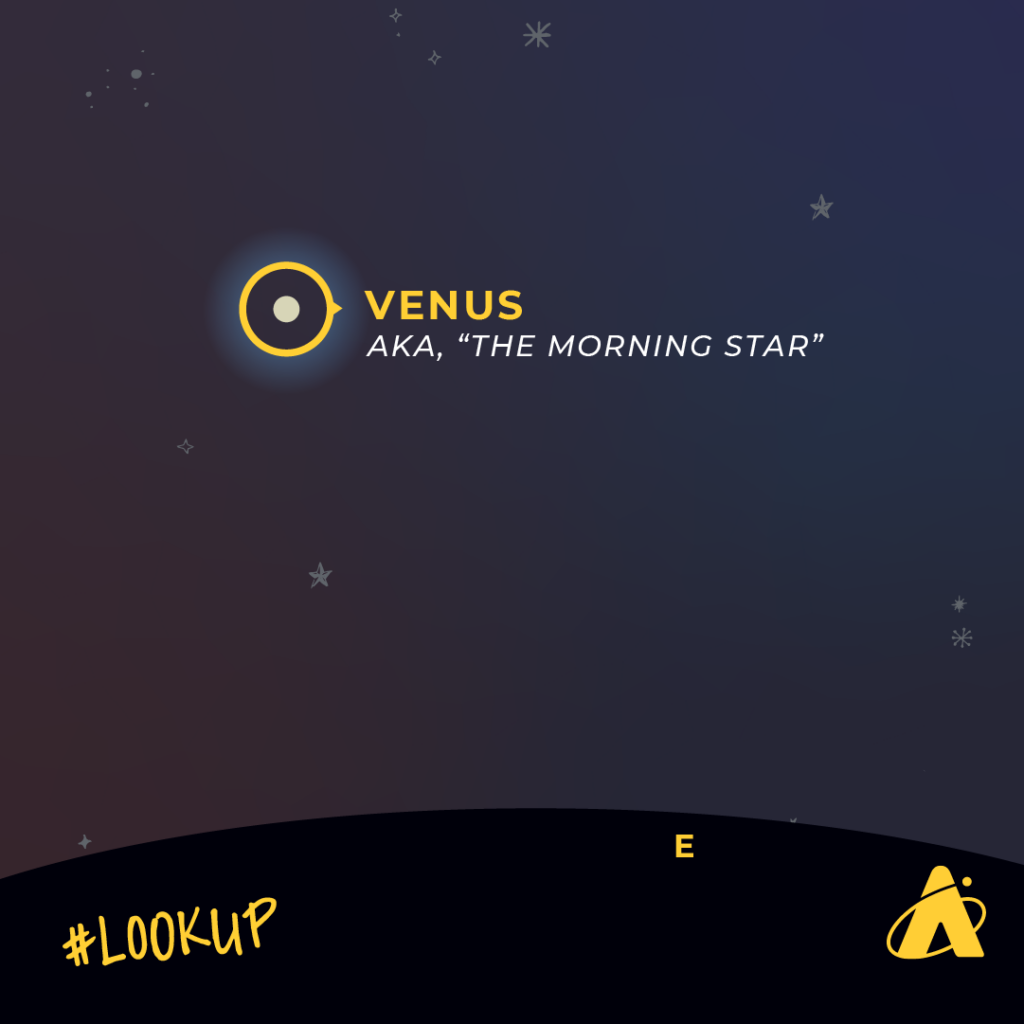
The planets Mercury and Mars appear very close to the setting Sun this month and thus will be difficult, if not impossible, to see.
Moon Phases
Full Super Moon: August 1
Last Quarter Moon: August 8
New Moon: August 16
First Quarter Moon: August 24
Full Super Blue Moon: August 30
Please note: these descriptions are for the Chicago area, using Central time.
Subscribe To Skywatch Wednesday This August
Tour the night sky with the Adler Planetarium’s Theaters Manager, Nick, in Skywatch Wednesday. Nick uses cutting edge visualizations, NASA images, and astrophotography to show you what you can see in the night sky throughout the year.
Check out our latest episode for an astronomical tour of the 2023 summer night sky! Learn about the summer triangle, the zodiac constellations, how to see the Milky Way galaxy, and more!
Learn From Our Astronomy Educators
Watch exclusive live episodes of Sky Observers Hangout this August! Learn how to observe upcoming cosmic happenings, enhance your astrophotography skills and see celestial objects through a telescope virtually with our astronomy educators. Check out Michelle and Hunter’s latest episode, Solar Observing Live. With the help of specialized solar viewing telescopes, our astronomy educators show you our favorite star up close, like you’ve never seen it before!





